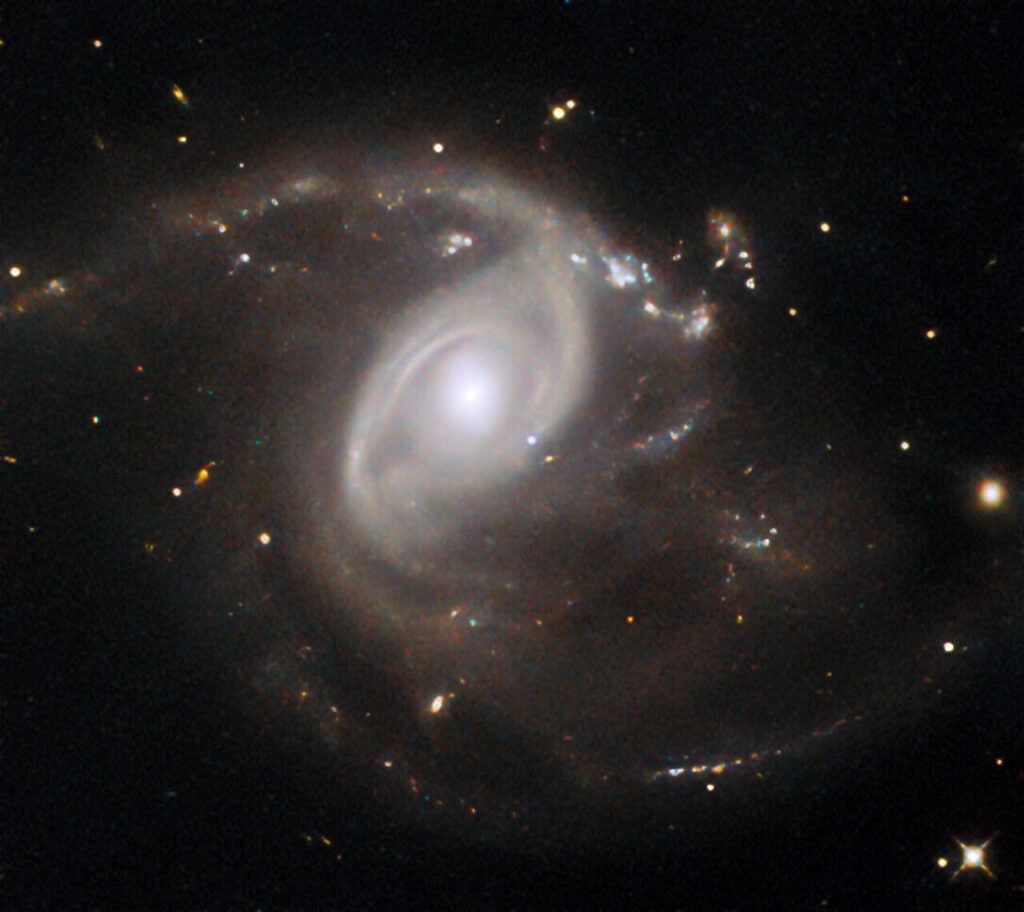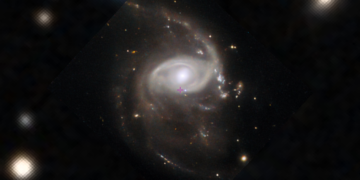The Hubble Space Telescope has done it again, offering astronomers and stargazers an awe-inspiring glimpse into the cosmos. This time, the telescope captured the pale blue glow of a supernova in the galaxy LEDA 22057, located 650 million light-years away in the constellation Gemini. Named SN 2024PI, this Type Ia supernova has already become a key to unlocking deeper understanding in astrophysics.
The Discovery of SN 2024PI: A Supernova in Action

Supernova SN 2024PI was first spotted in January 2024 through an automated sky survey designed to sweep the northern hemisphere every two days. Its detection was no ordinary occurrence; SN 2024PI is a bright, transient event that stood out as a pale blue dot within the spiral arms of its host galaxy. By the time Hubble trained its lenses on the supernova, about six weeks after its discovery, its brilliance had faded significantly, giving astronomers a limited yet powerful window to study it.
SN 2024PI’s significance lies in its classification as a Type Ia supernova. These are not just visually striking phenomena but also vital tools for astronomers aiming to measure vast cosmic distances.
Type Ia Supernovae: The Stellar Dynamics Behind the Explosion
Type Ia supernovae occur under unique and fascinating conditions. Unlike other types of supernovae triggered by the collapse of massive stars, Type Ia explosions originate from white dwarfs in binary star systems. White dwarfs are the remnants of stars that have exhausted their nuclear fuel, leaving behind dense cores roughly the size of Earth but with the mass of the Sun.
In a binary system, if a white dwarf siphons enough material from its companion star, it reaches a critical mass limit (known as the Chandrasekhar limit). At this tipping point, runaway nuclear fusion ensues, leading to a catastrophic explosion that obliterates the white dwarf. The resulting supernova is so bright that it can outshine entire galaxies for weeks.
Why Type Ia Supernovae Are Crucial to Cosmology
Type Ia supernovae are not merely spectacular cosmic fireworks; they are also invaluable tools for mapping the universe. Astronomers use them as “standard candles,” objects with known intrinsic brightness, to measure distances across the cosmos. Because their brightness follows a predictable pattern, observing their apparent luminosity allows scientists to calculate how far away they are.
Galaxy LEDA 22057: The Host of a Cosmic Explosion
LEDA 22057, the host galaxy of SN 2024PI, provides a rich backdrop for this supernova event. Located in the constellation Gemini, the galaxy features ghostly spiral arms that cradle the pale blue light of the explosion. Galaxies like LEDA 22057 serve as natural laboratories, helping scientists observe how massive explosions like supernovae interact with their environments.
In this case, the galaxy’s structure and proximity offer an ideal opportunity to study how the debris from a Type Ia supernova disperses through a spiral galaxy, enriching it with heavier elements like iron and nickel.
The Role of Advanced Telescopes in Capturing Supernovae
The discovery and observation of SN 2024PI highlight the importance of cutting-edge telescopes like Hubble in advancing our understanding of the universe. With its unparalleled resolution and ability to observe in multiple wavelengths, Hubble offers insights into the physical properties of supernovae, from their temperature and composition to their fading luminosity over time.
Hubble’s capabilities are complemented by automated surveys that constantly scan the skies, enabling astronomers to detect transient events like SN 2024PI early. This synergy between technology and human ingenuity ensures that fleeting cosmic phenomena are not missed.
The Broader Implications of SN 2024PI
The study of SN 2024PI is not just about understanding one supernova; it’s about piecing together the larger puzzle of the universe. By examining the remnants of these explosions, scientists can trace the origins of elements essential for life, investigate the mechanisms driving cosmic expansion, and explore the nature of dark energy.
Moreover, events like SN 2024PI inspire awe and curiosity, reminding us of the dynamic and ever-changing nature of the universe. They serve as a bridge between scientific discovery and public fascination, drawing more attention to the wonders of the cosmos.
Conclusion: A Window into the Universe
The discovery and study of SN 2024PI in galaxy LEDA 22057 exemplify the power of modern astronomy to uncover the secrets of the universe. This pale blue supernova is more than a fleeting celestial event; it is a key to understanding the fundamental forces and processes that shape the cosmos.



















